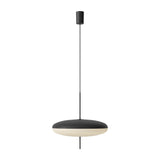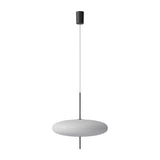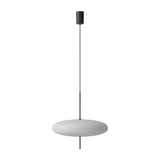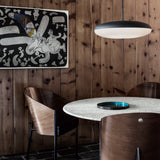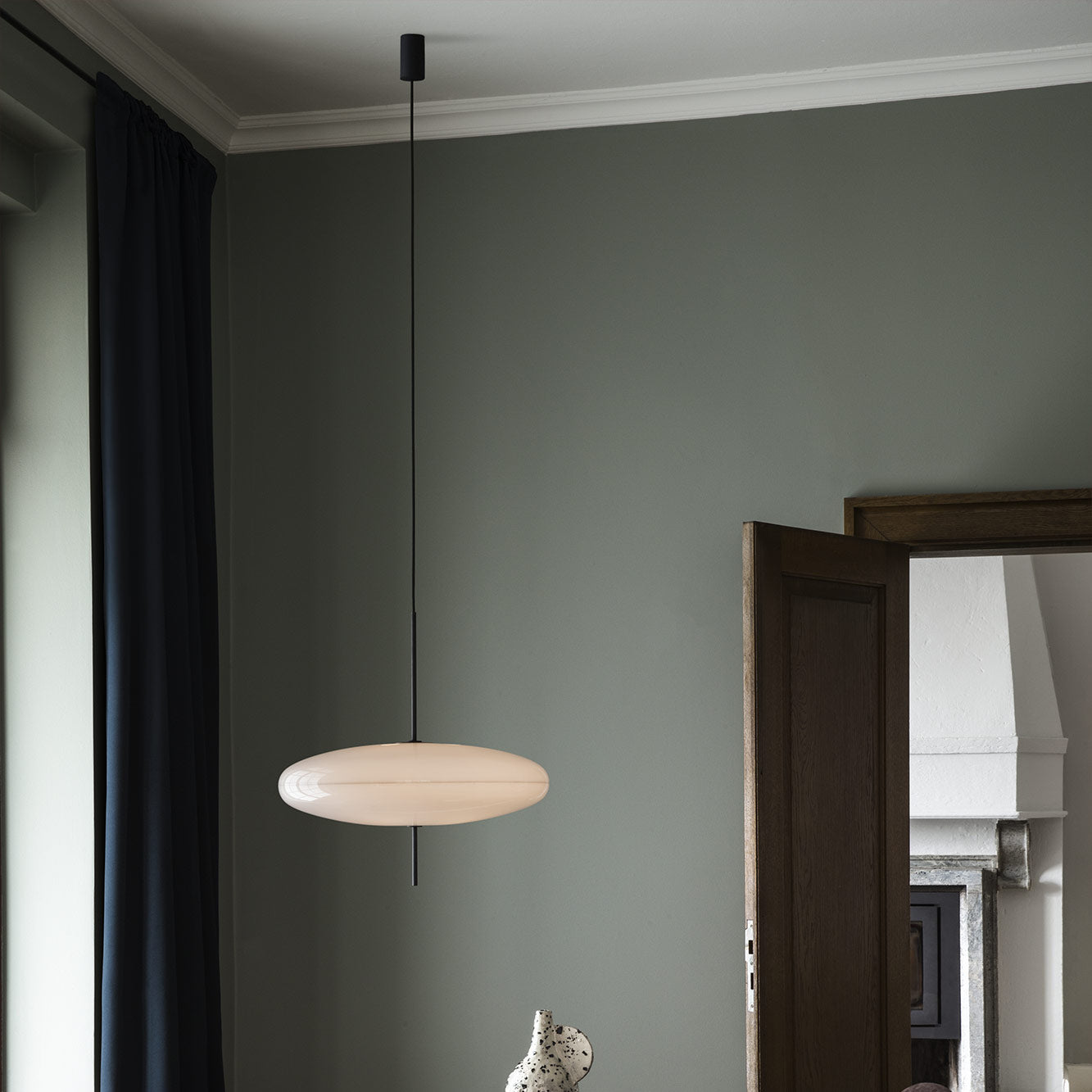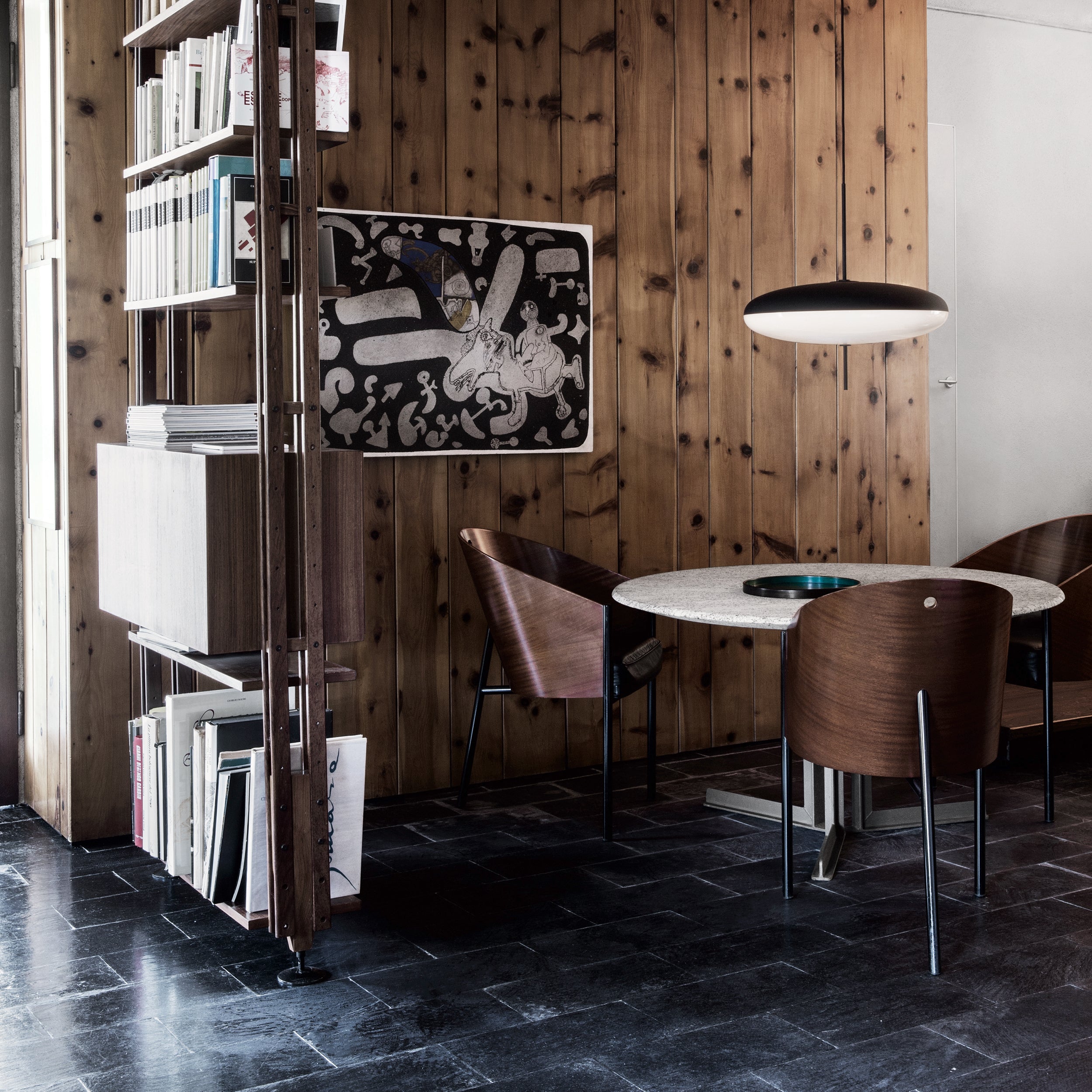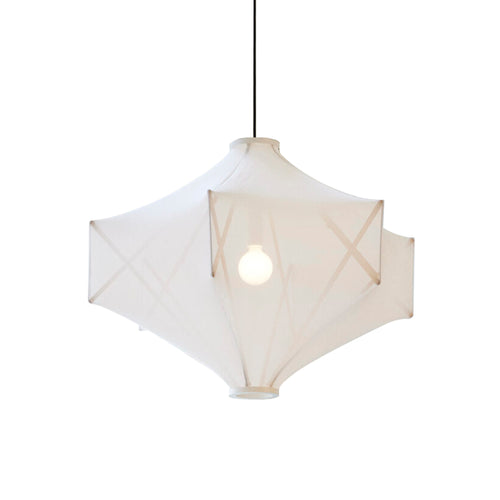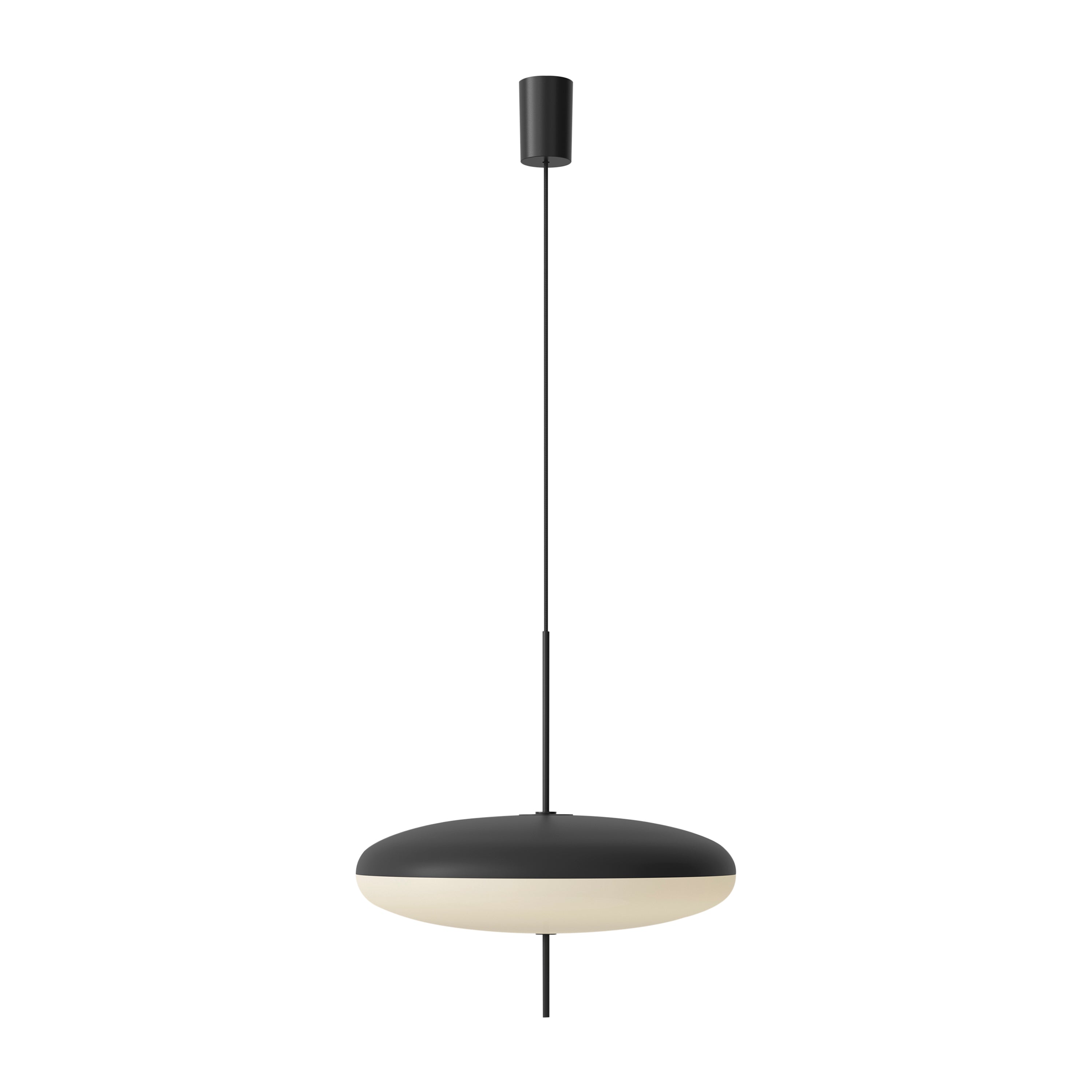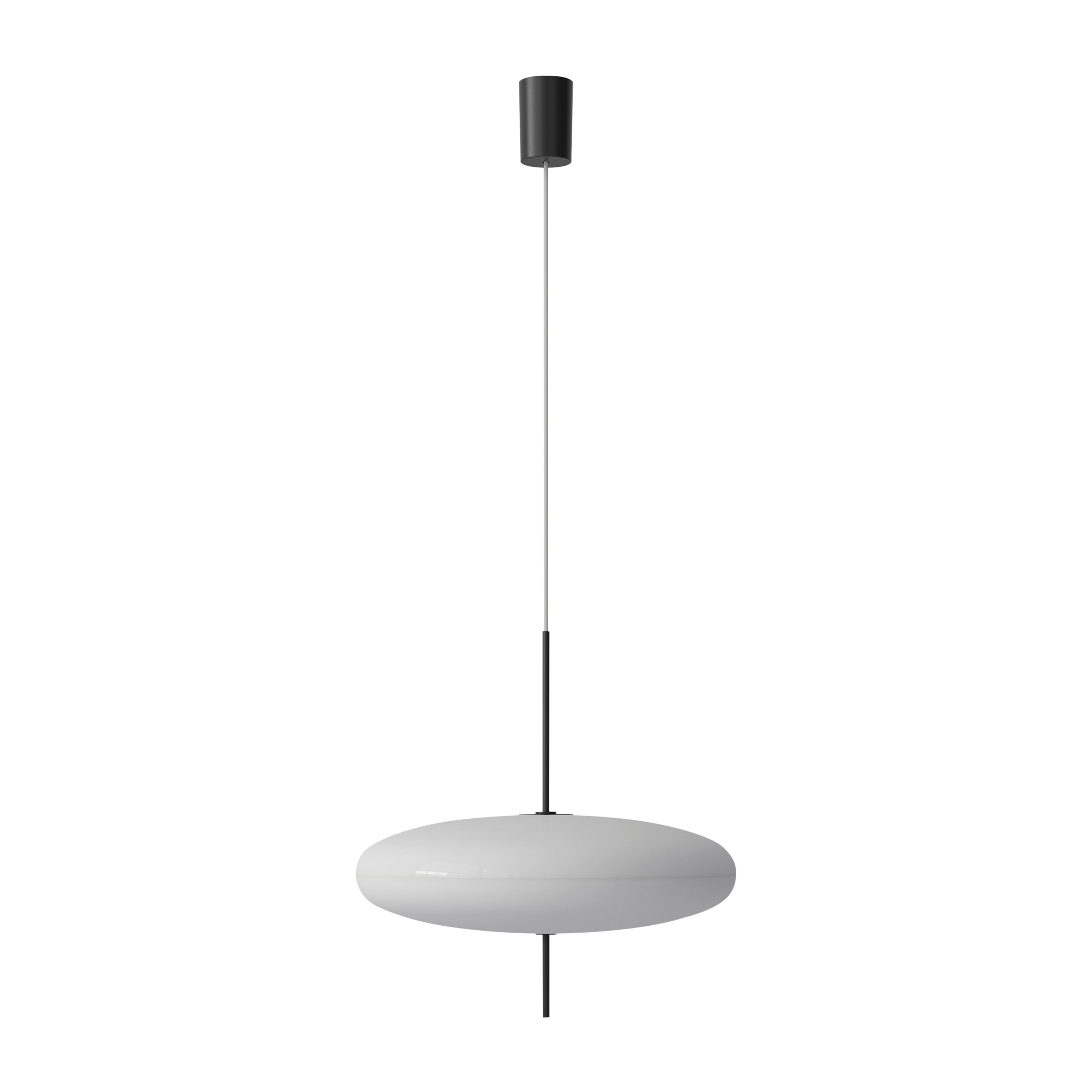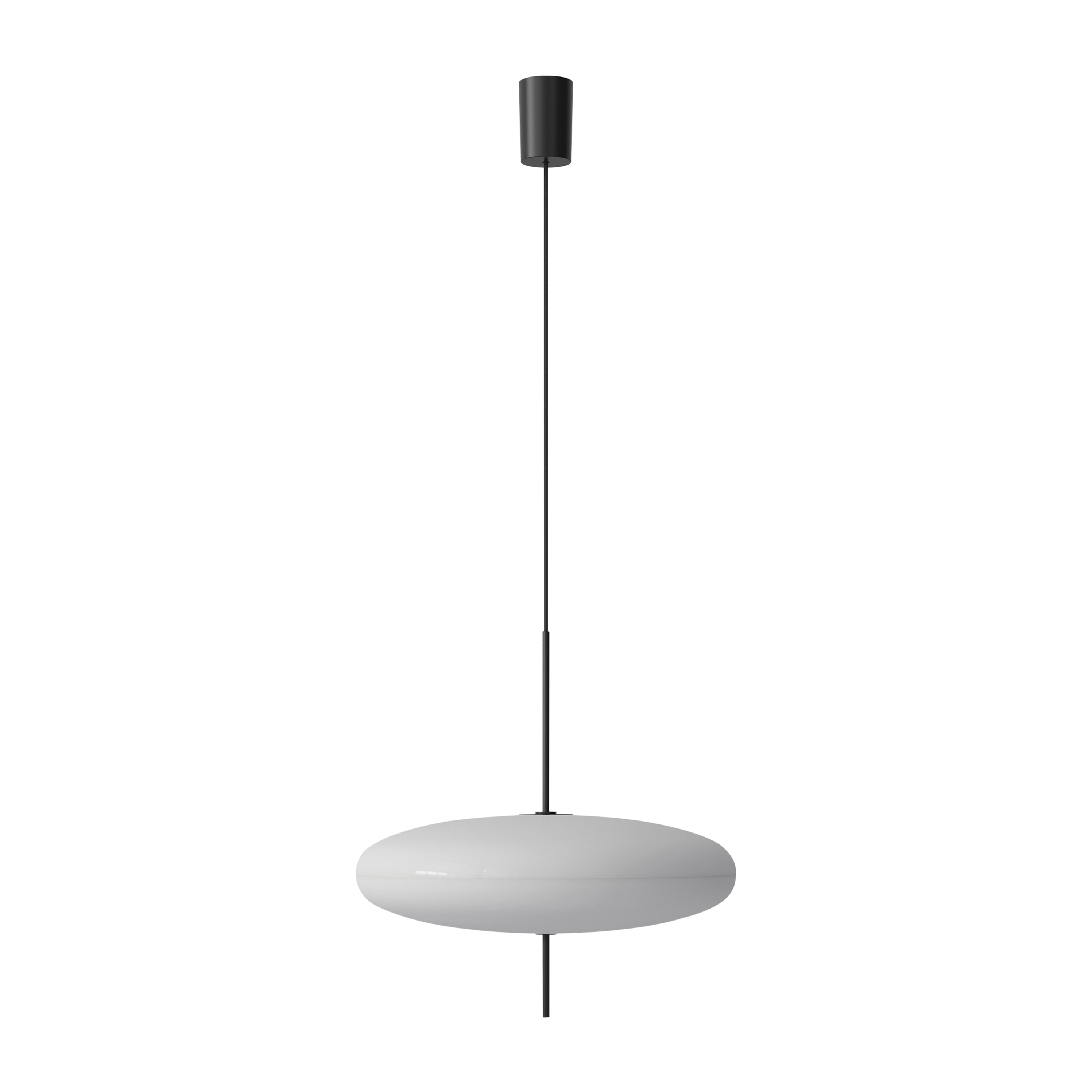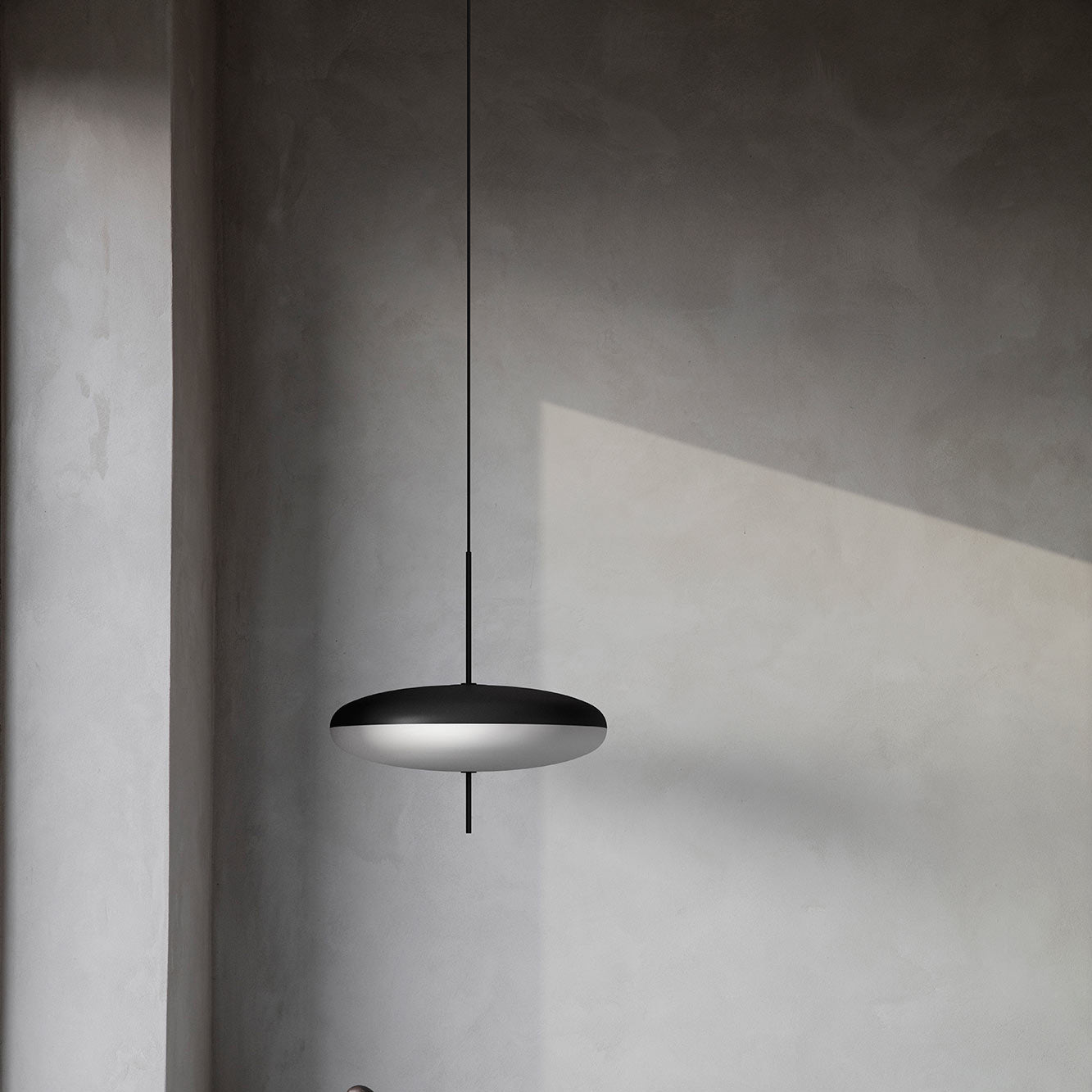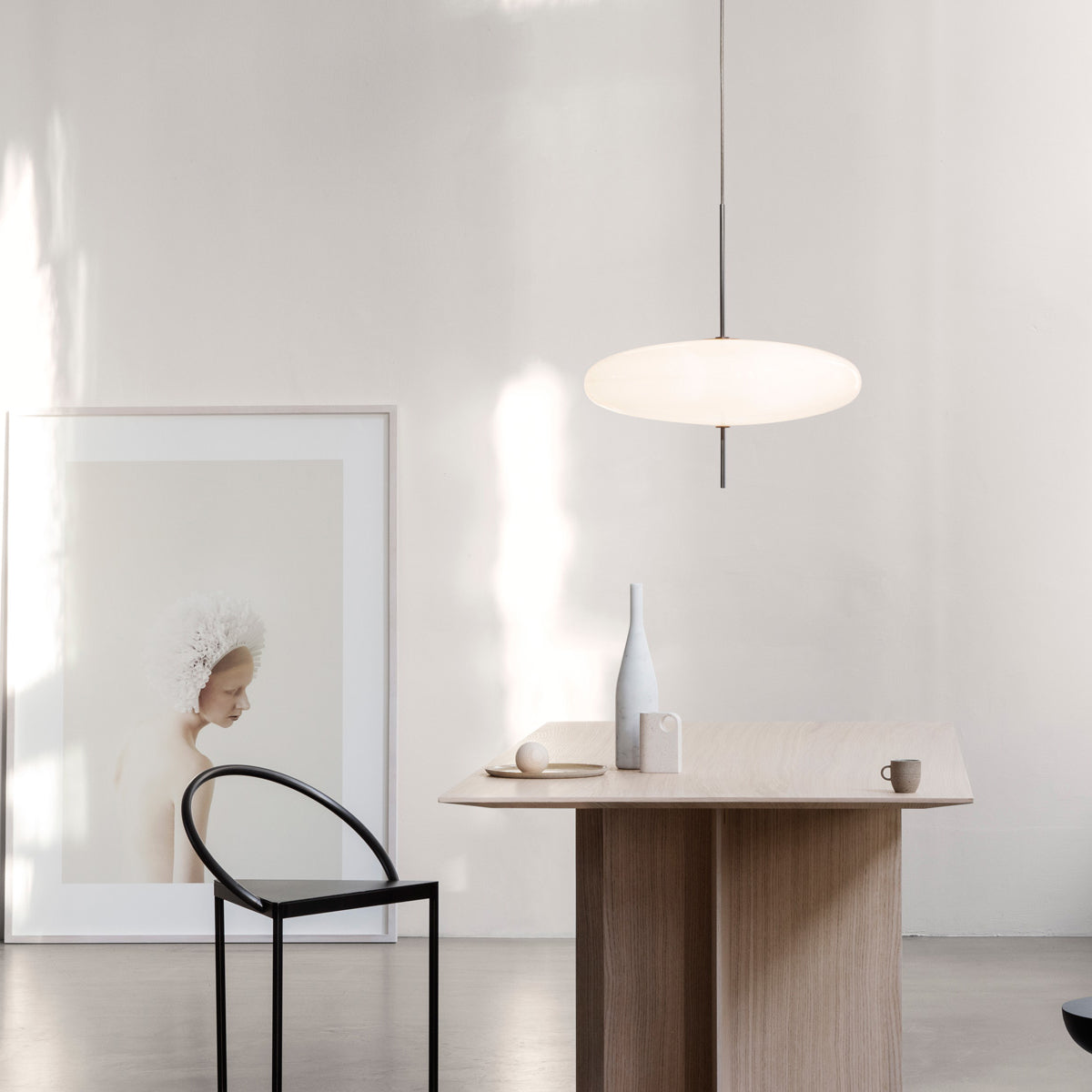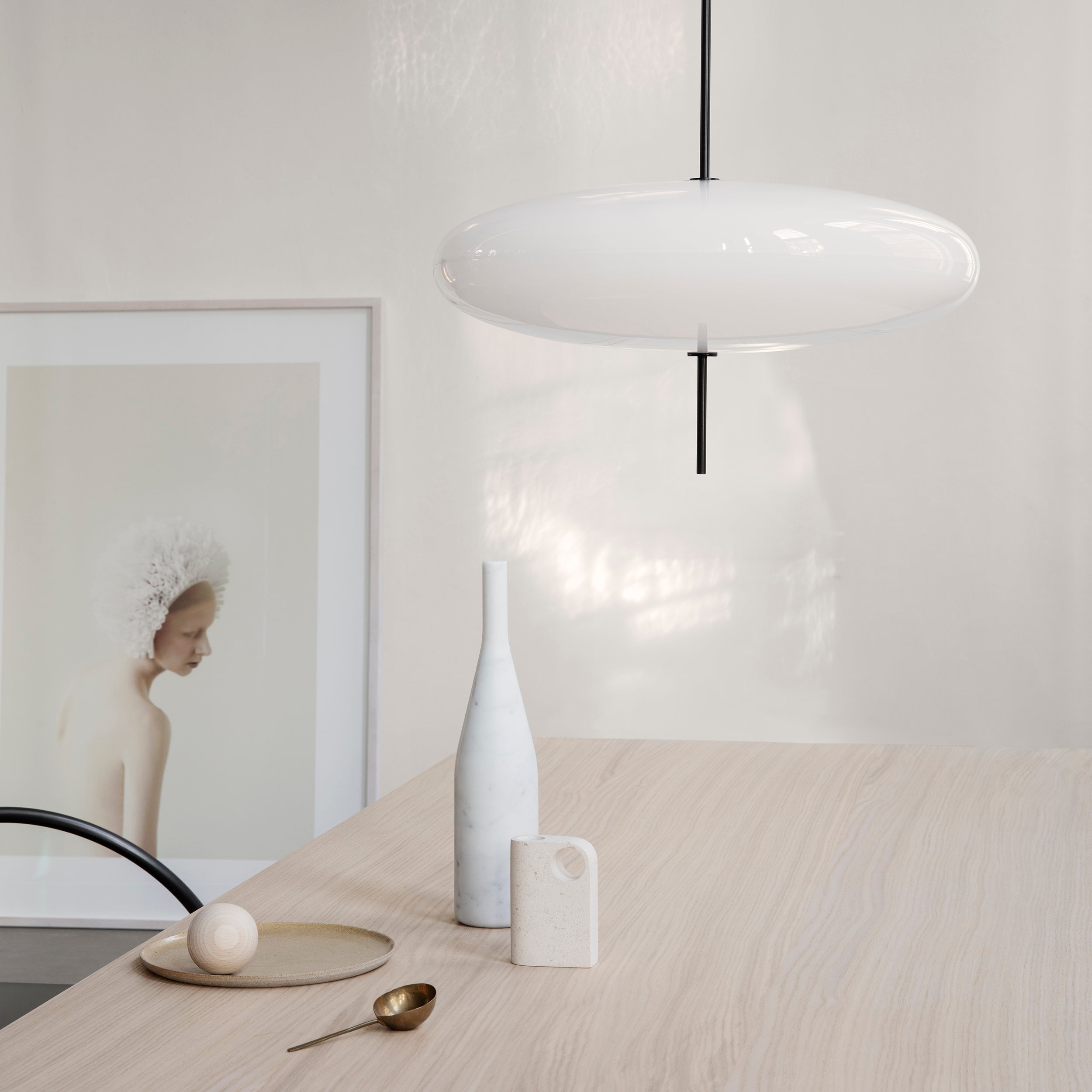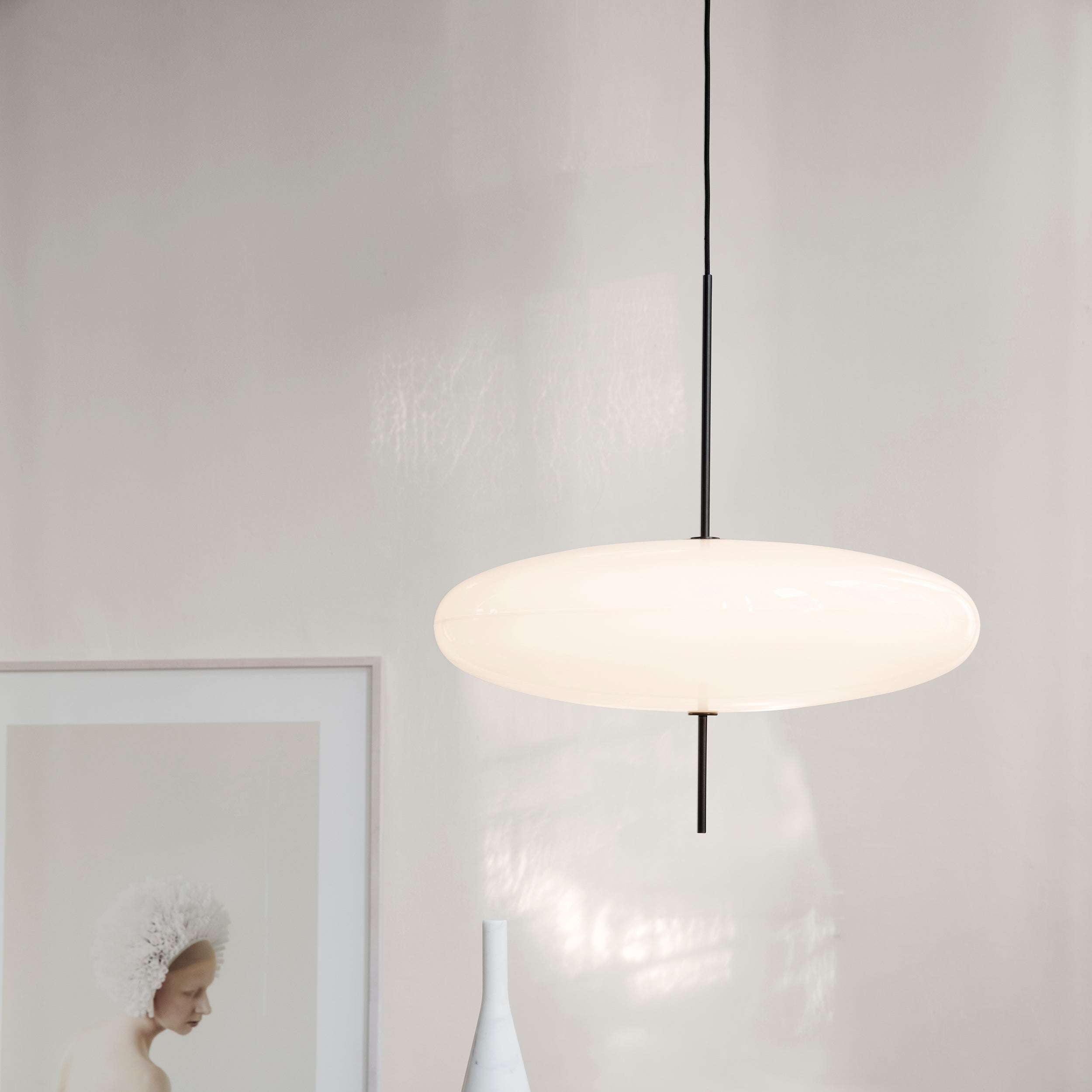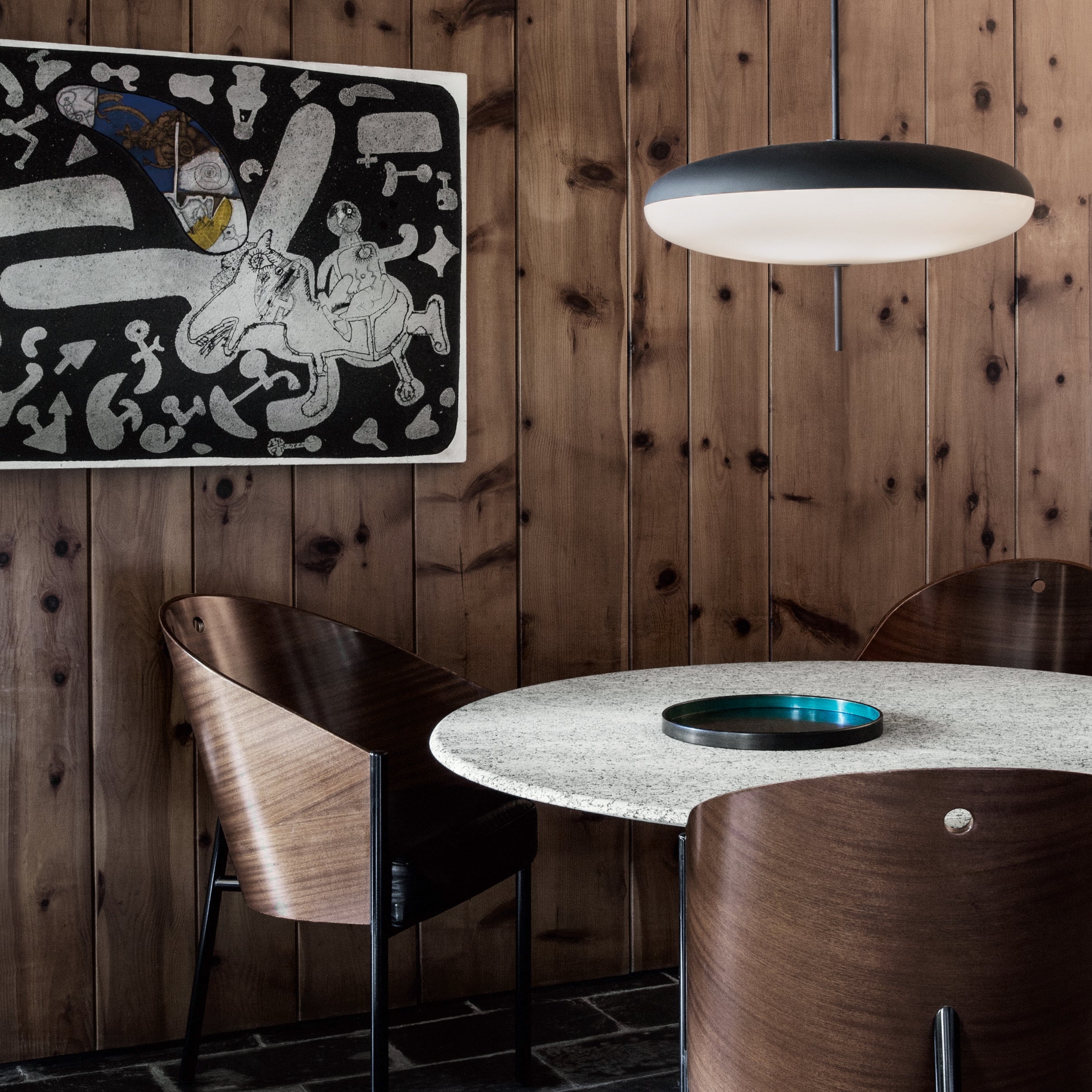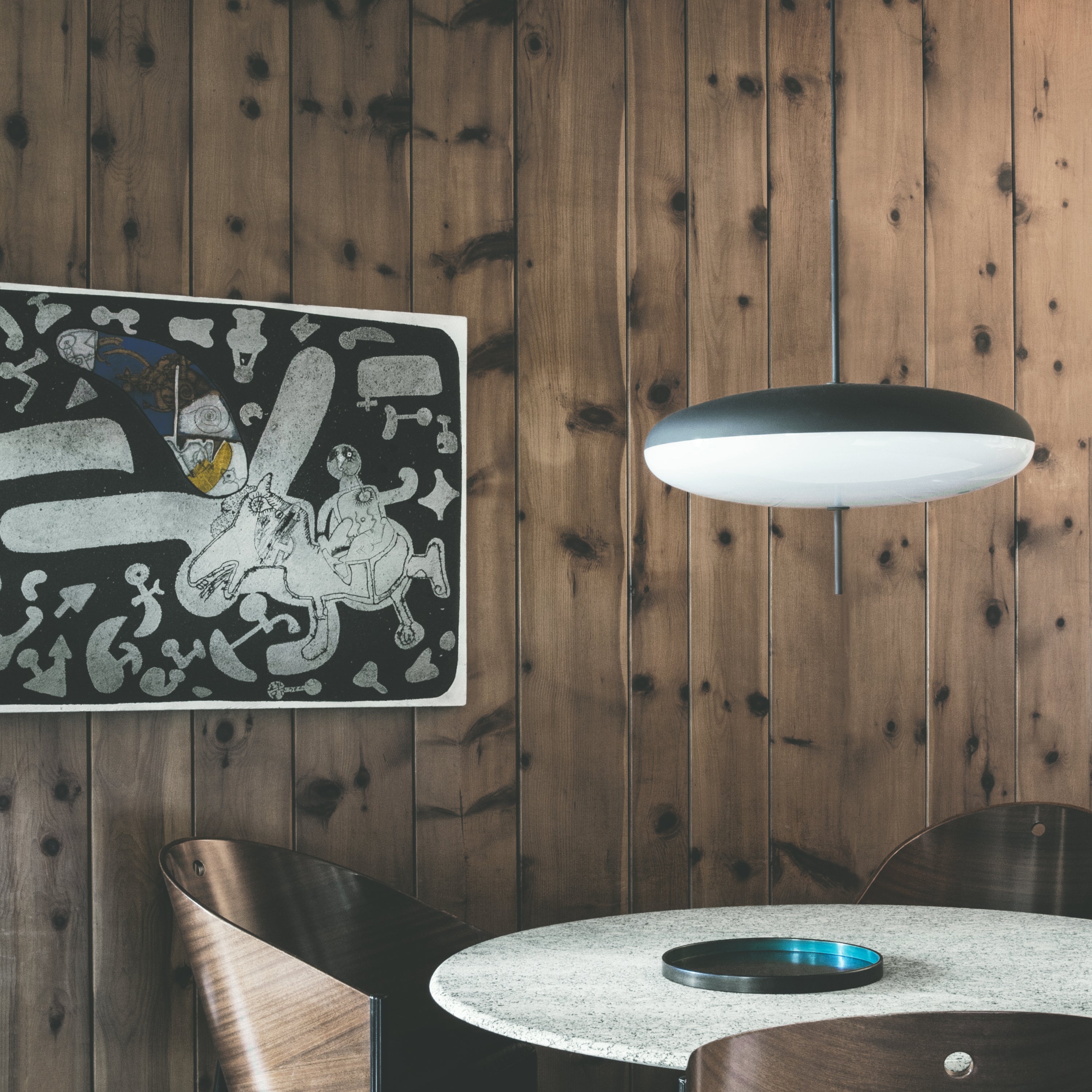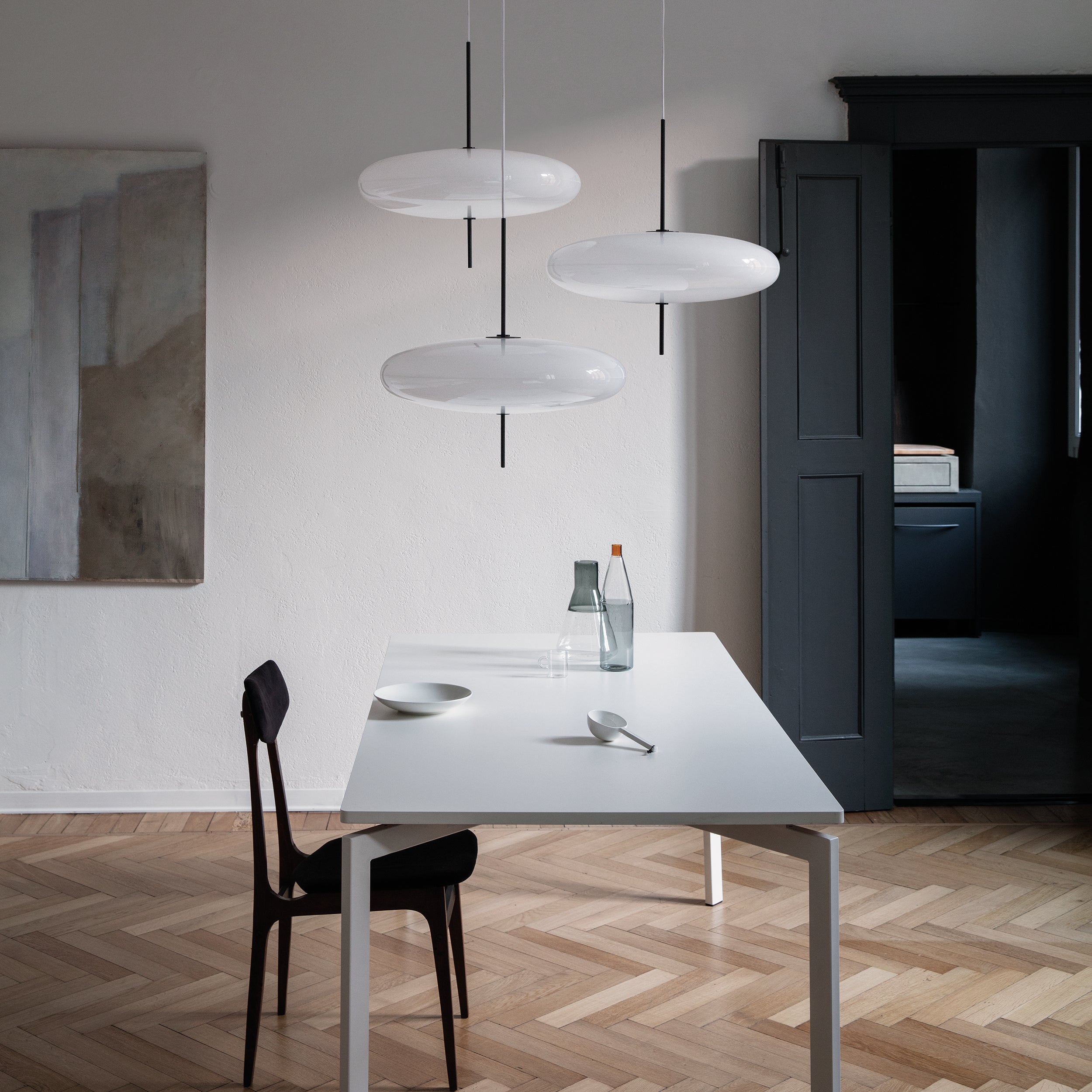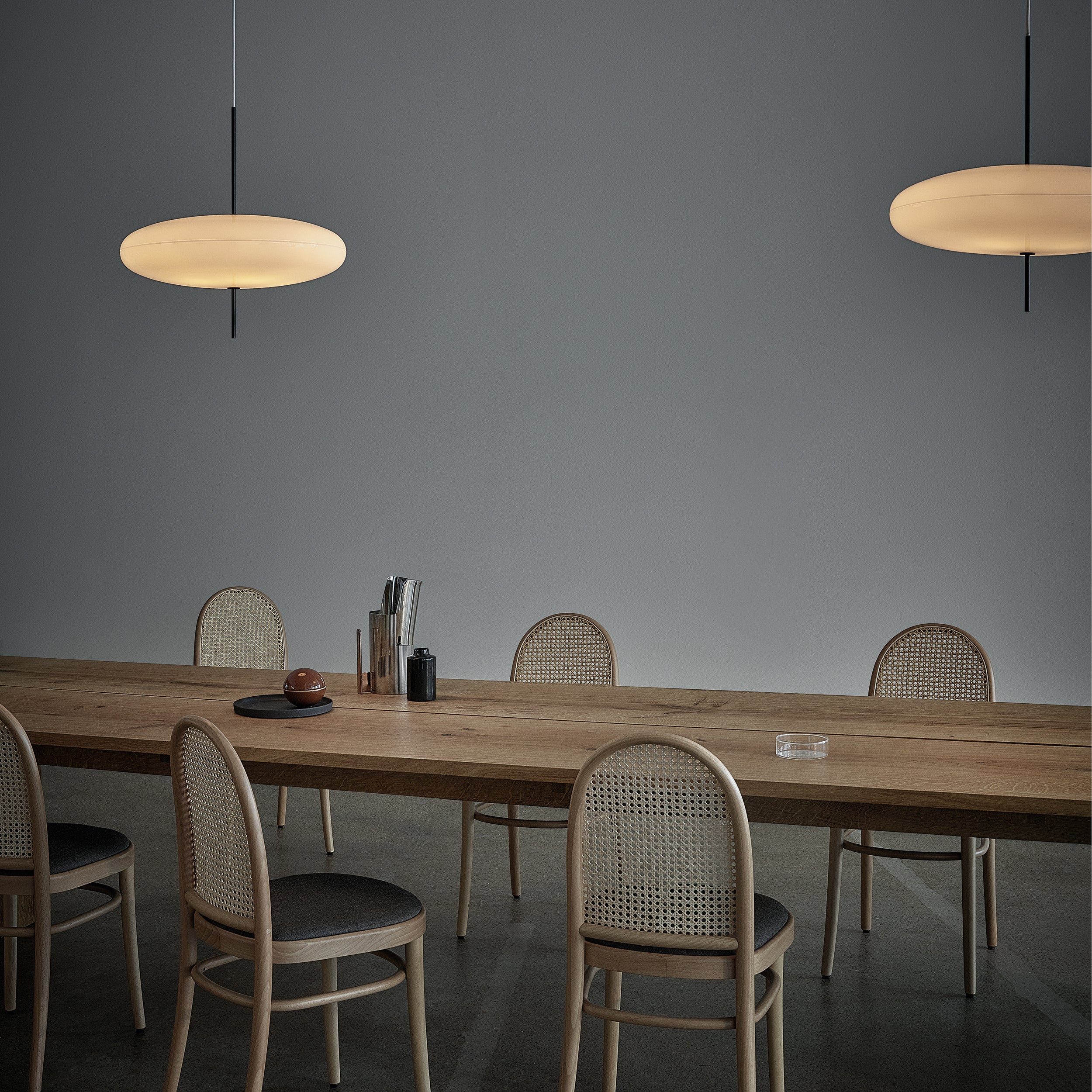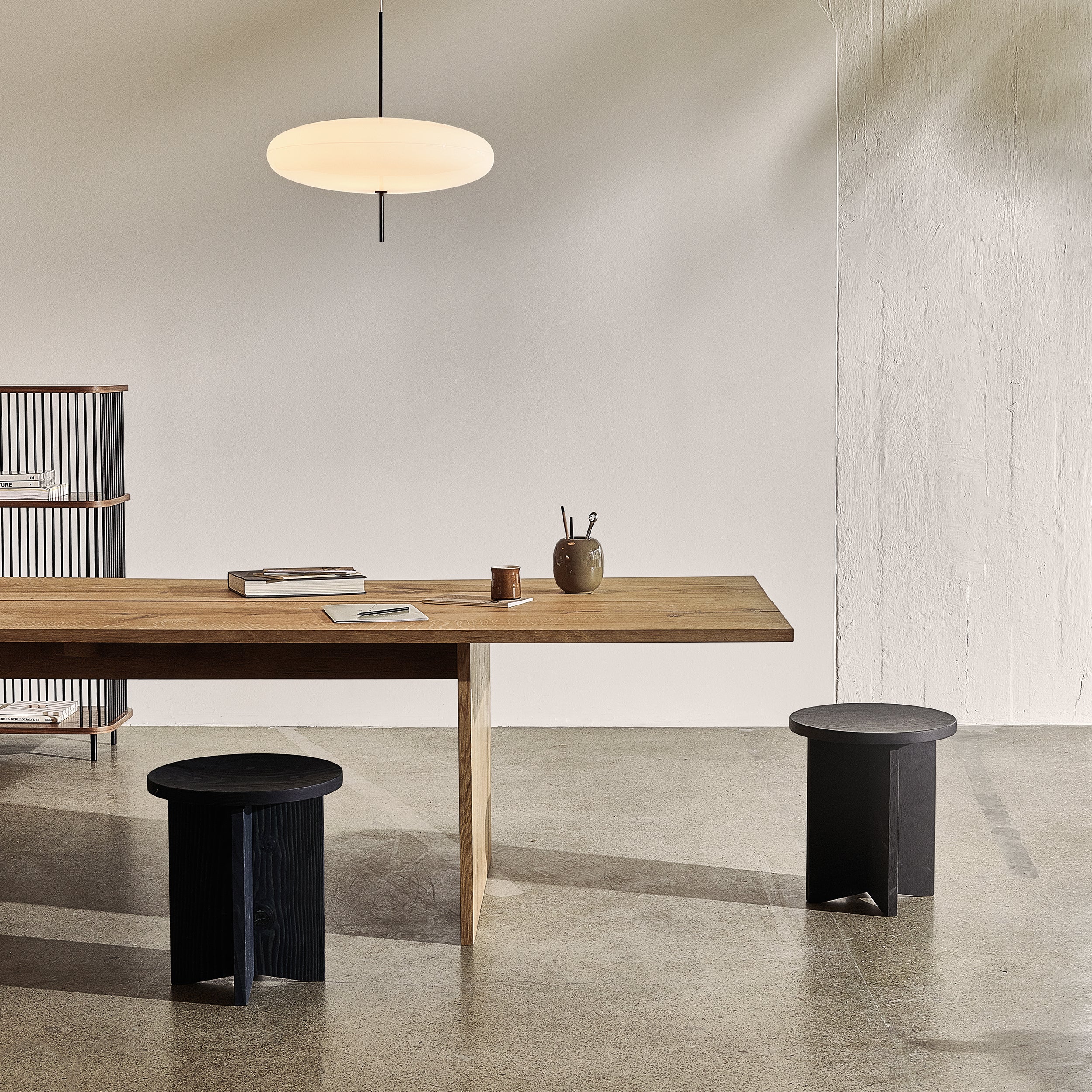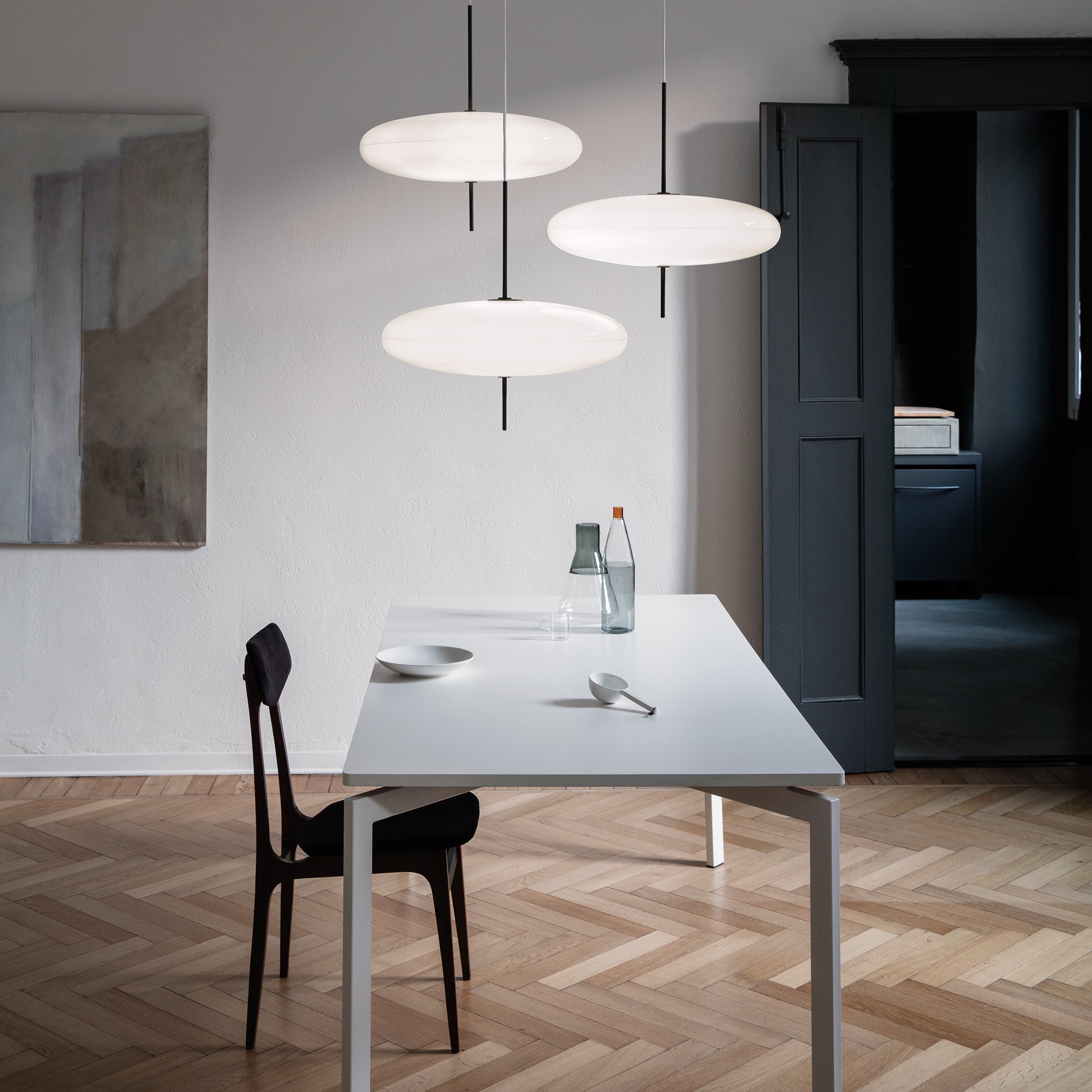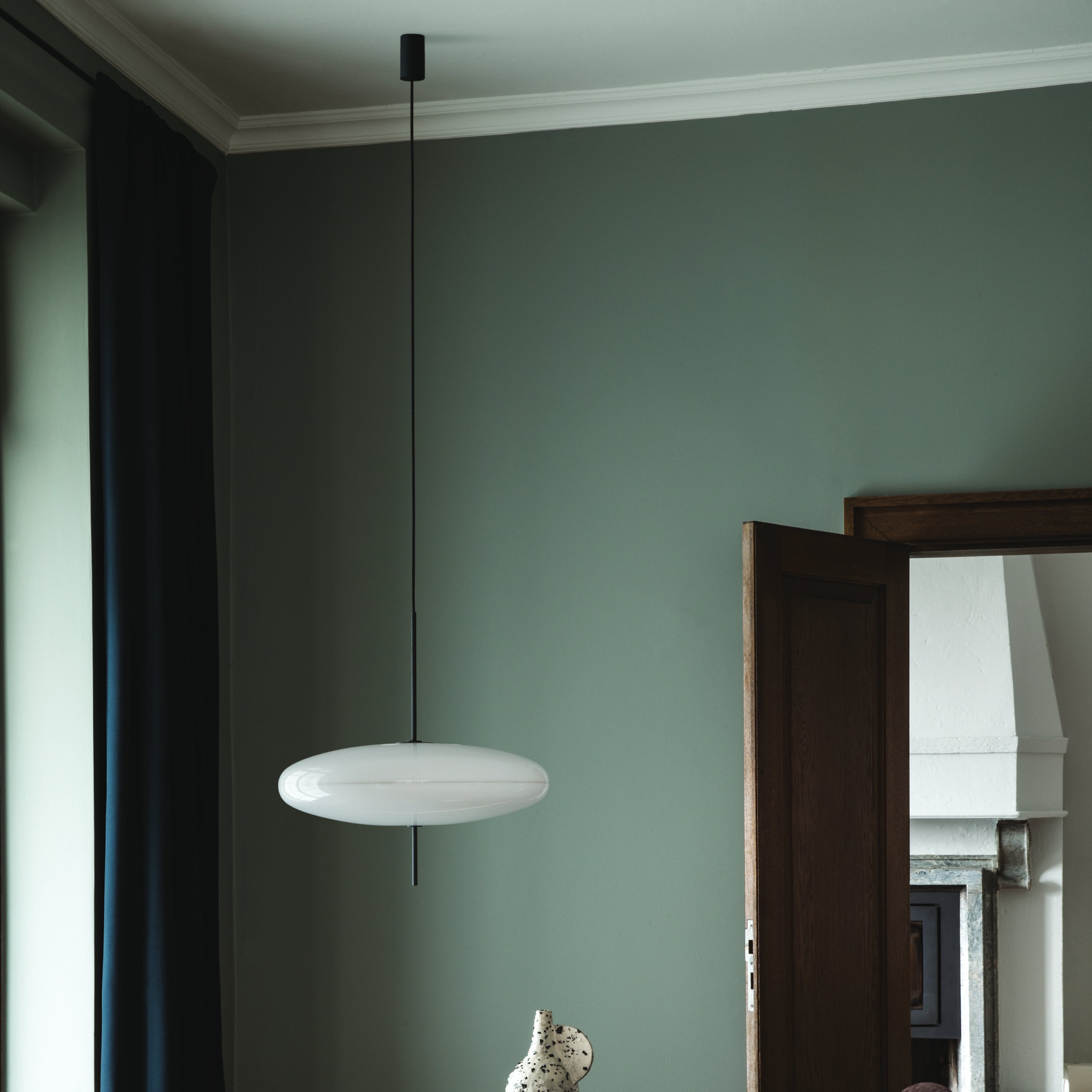


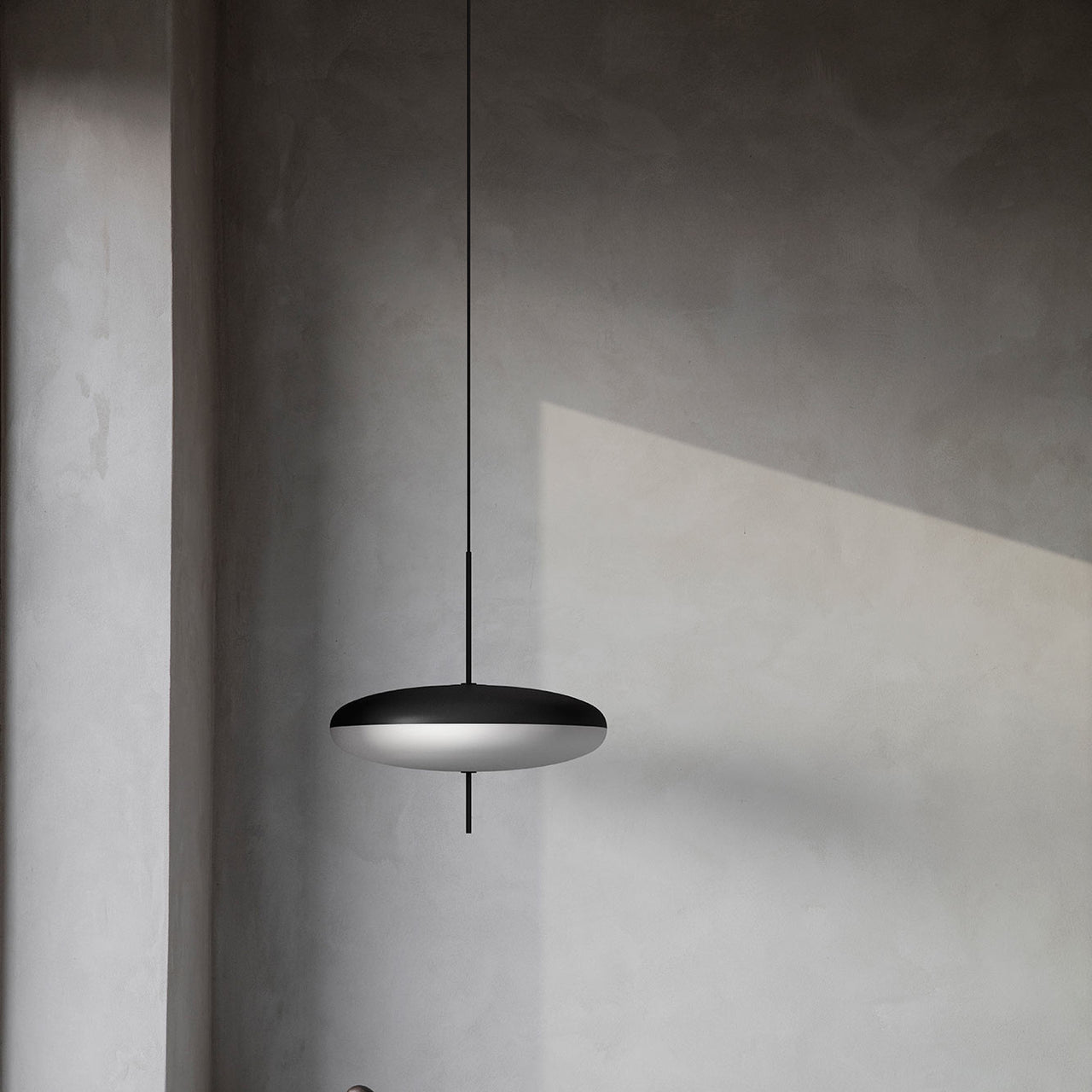
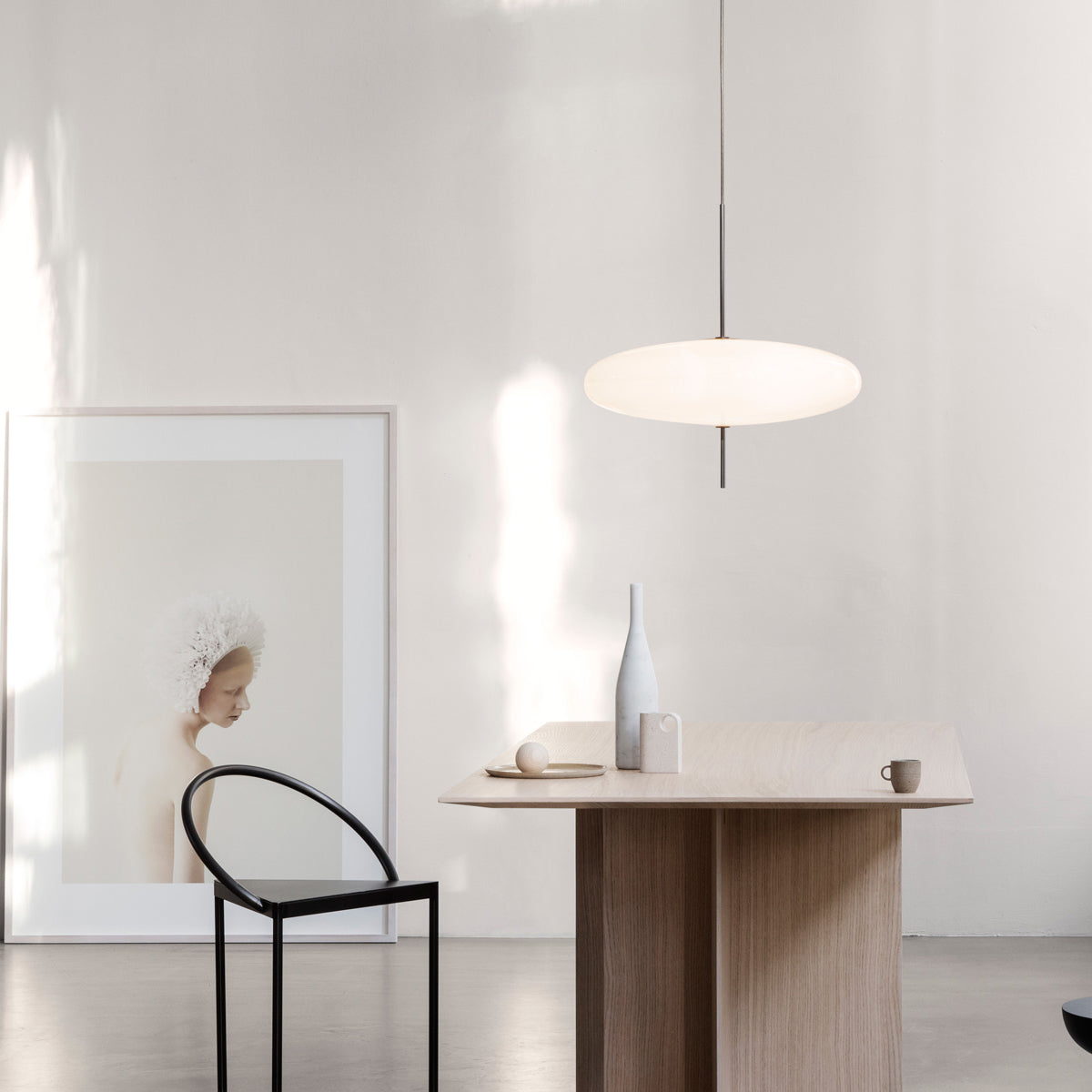
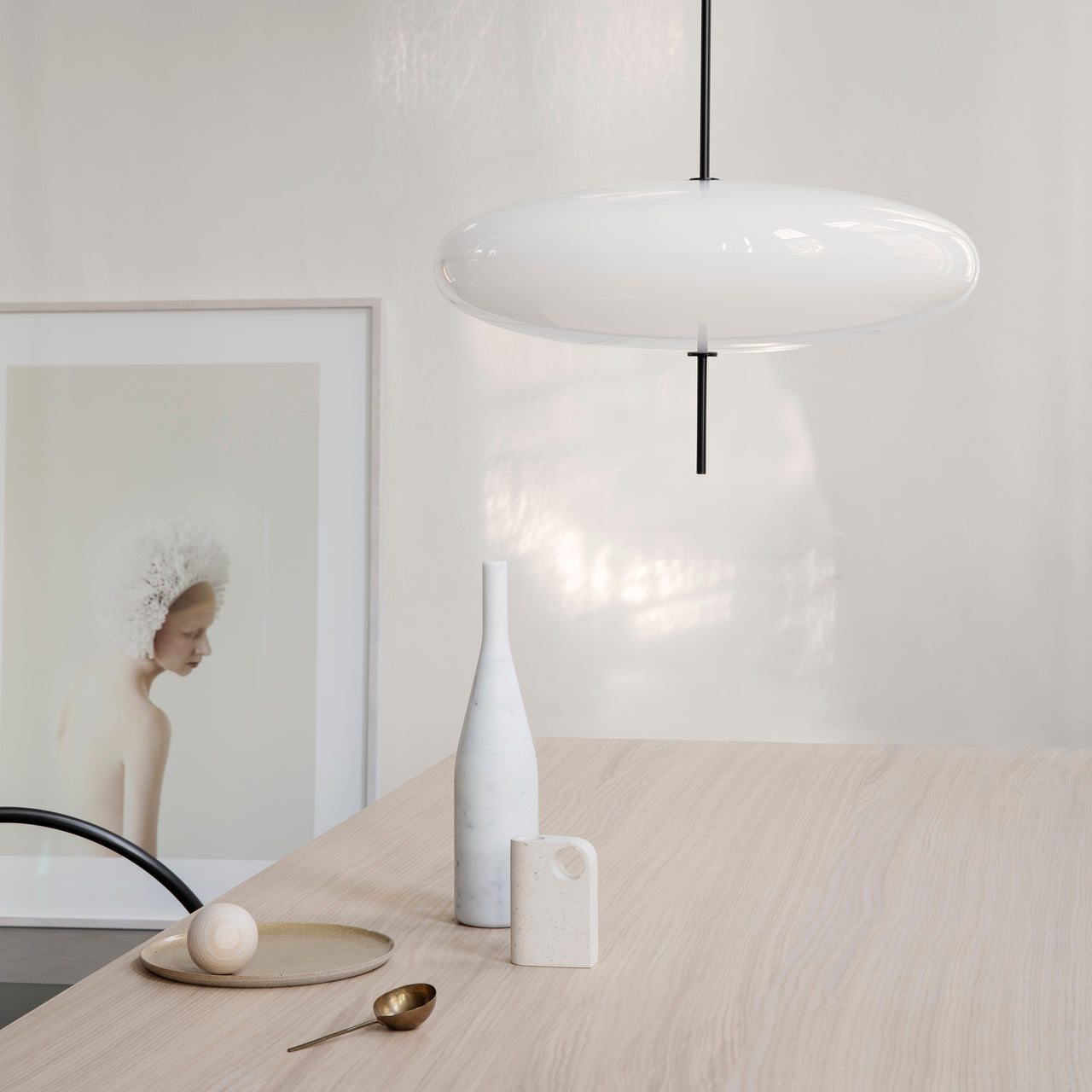

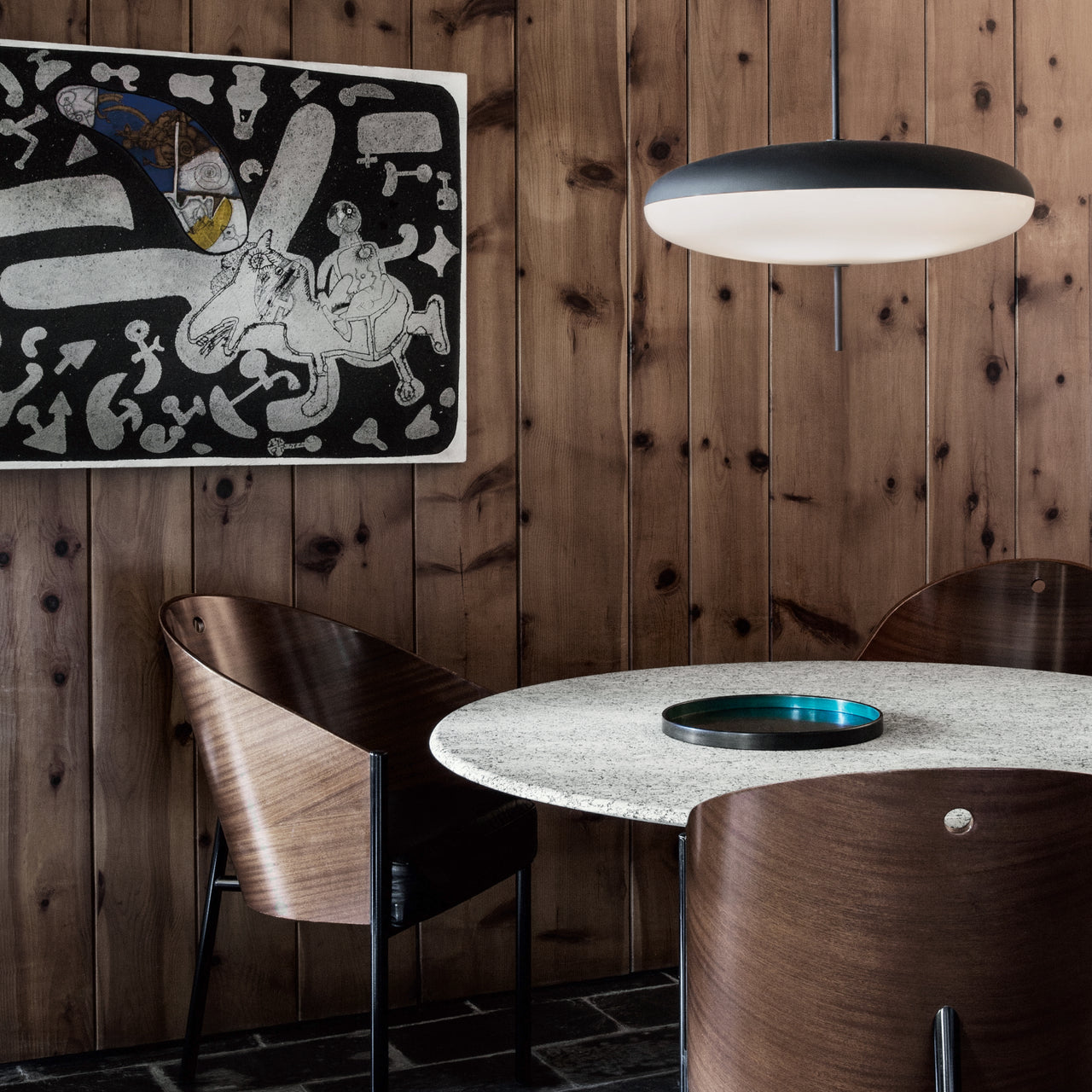
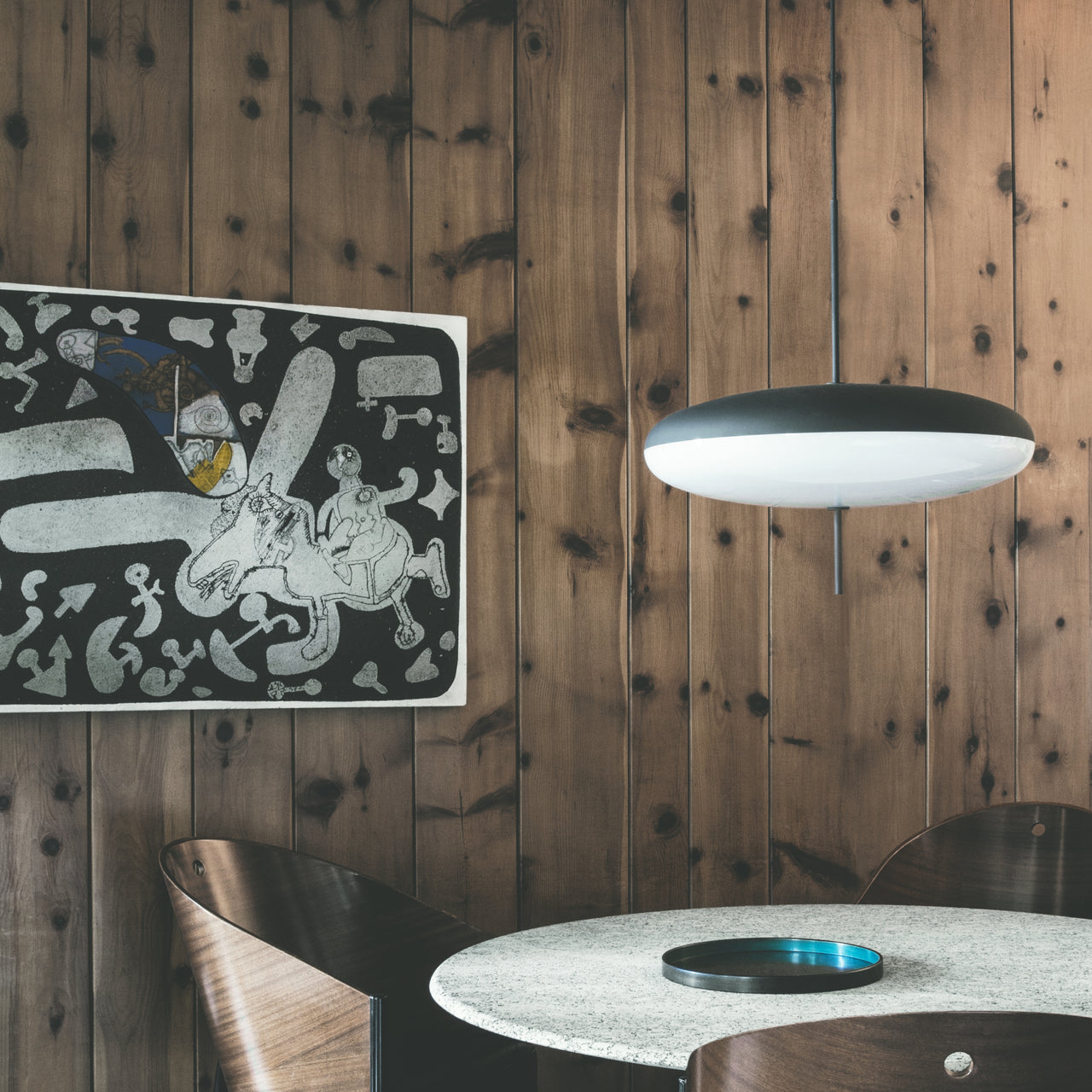
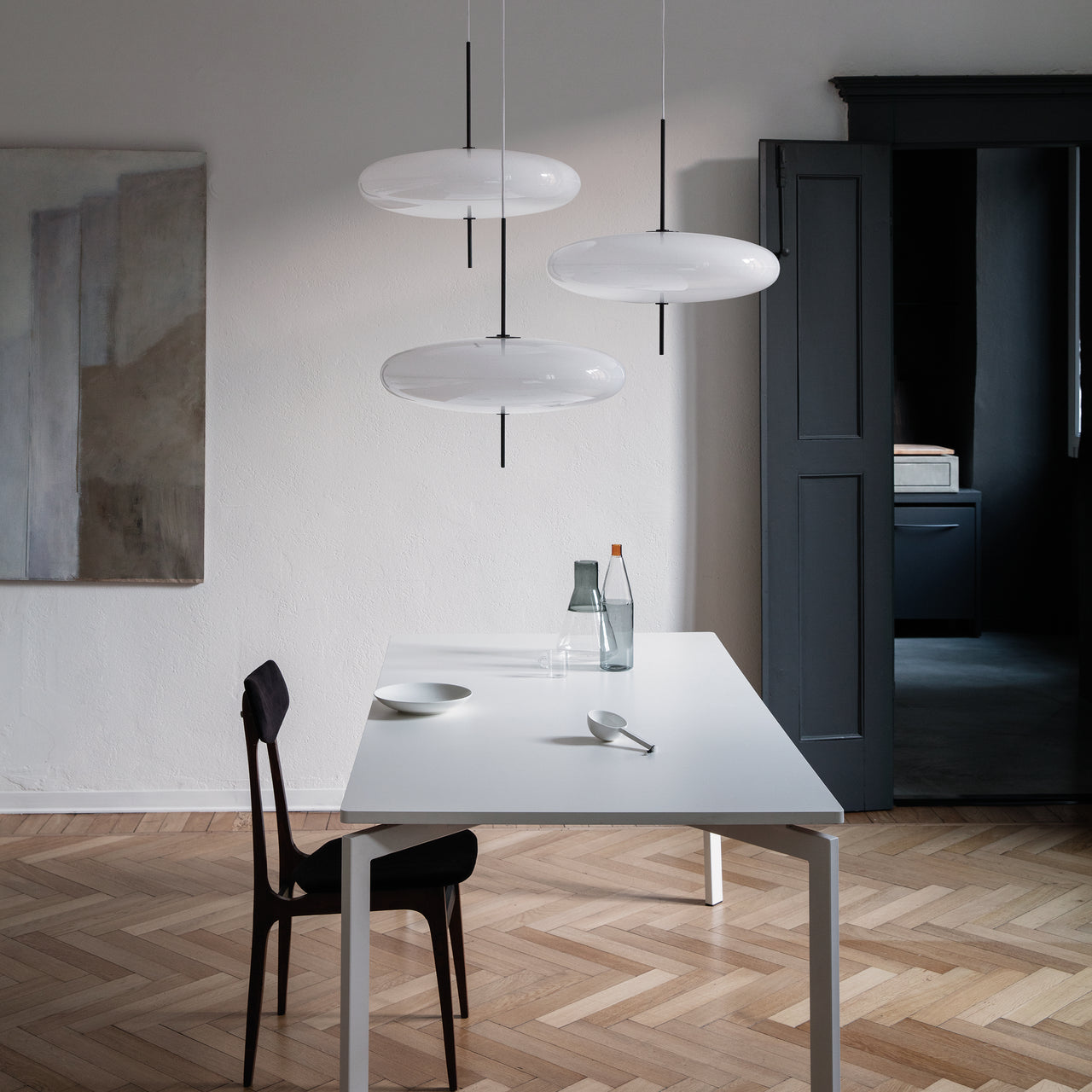


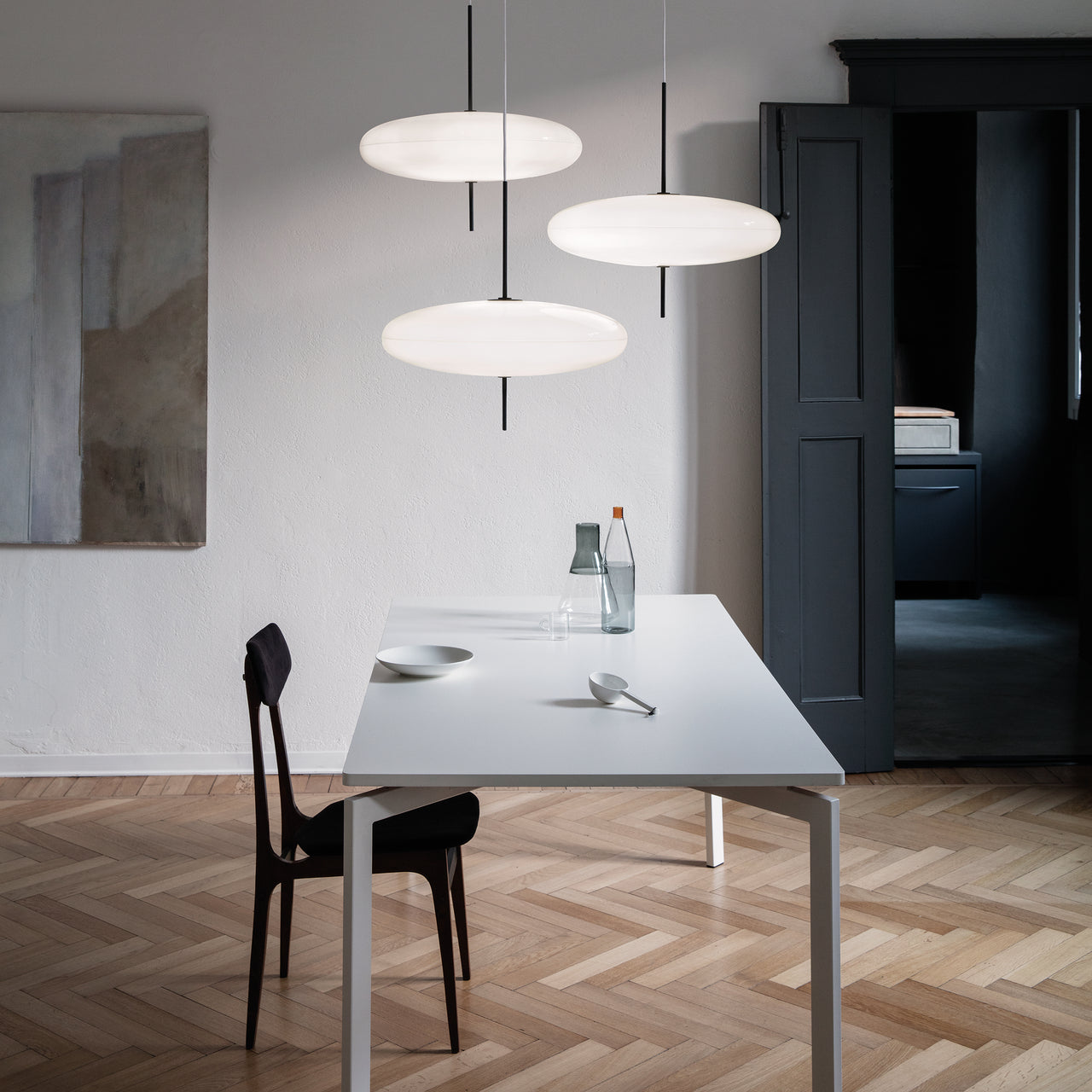
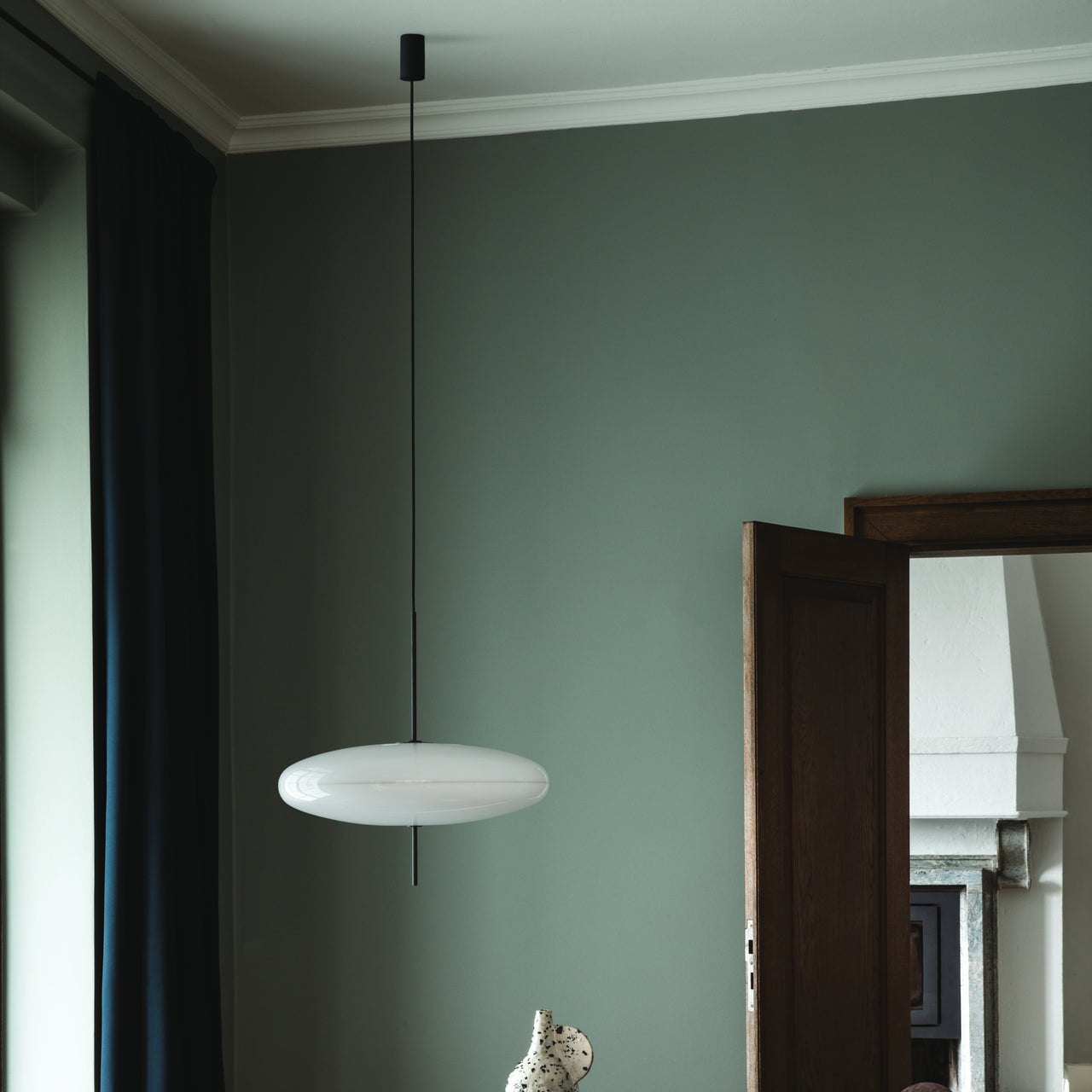


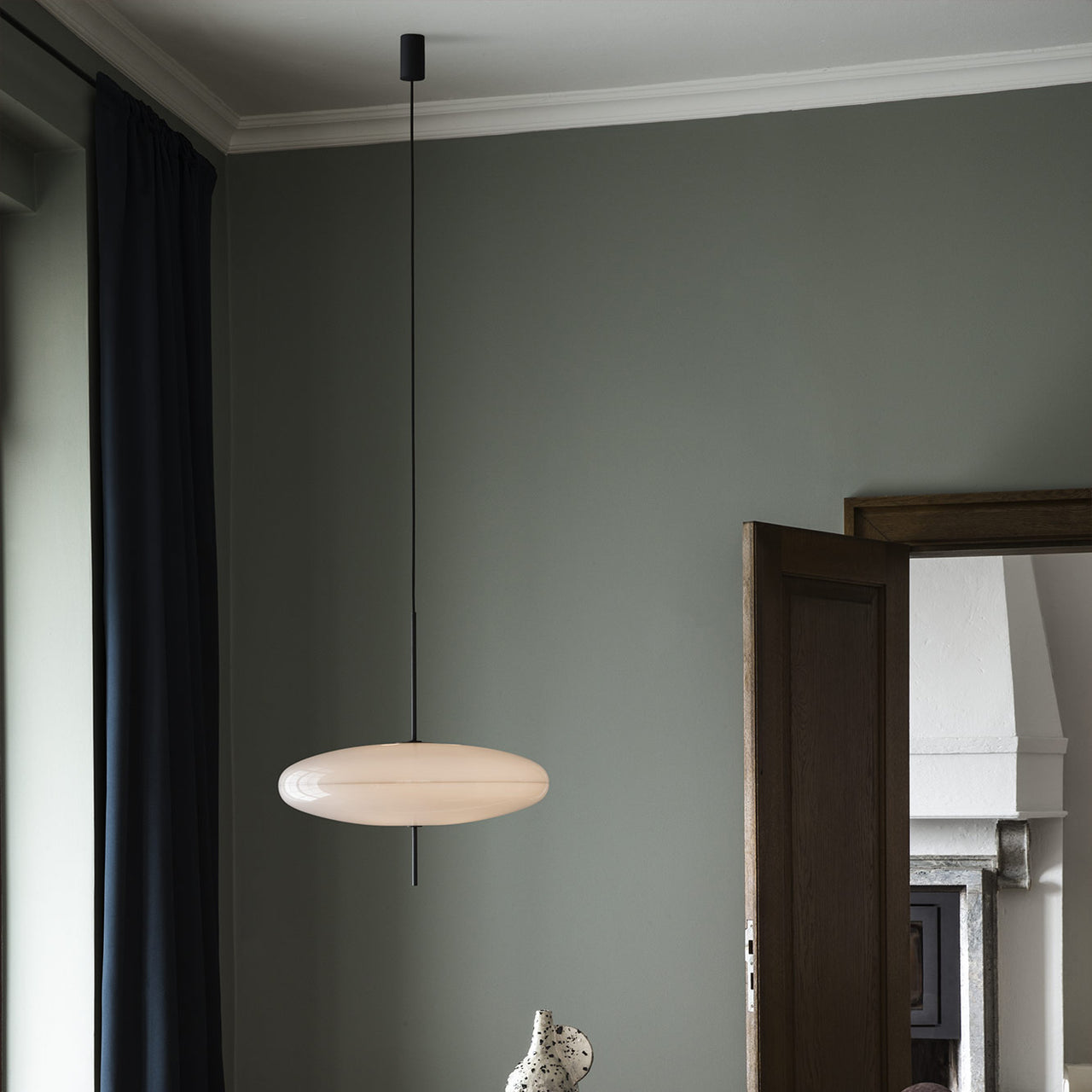

Model 2065 Suspension Lamp
$2,115
–
$2,280
$2,280
SKU: ASTP-T01-S33-OBBW
$2,115
SKU: ASTP-T01-S33-OWWW
$2,115
SKU: ASTP-T01-S33-OBWW
Description
Although glass was favored at the time, when Gino Sarfatti came upon a new weightless plastic, this iconic 1950 suspension light was the result. Model 2065 joins 2 opalescent saucers to act as a diffuser, in a dramatic elliptical form. Along with relaunching the original, Astep also introduces a version with a black upper finished with a soft-touch coating. In another update, LED bulbs now provide the illumination for both versions.
Specifications
Size
- 21.5" h x 21.2" dia (54.6x53.8cm)
- Shade: 21.2" dia (53.8cm)
- Cable length: 118.1" (300cm)
Material
Opaline methacrylate, aluminum
Technical
- UL version available, contact us for details
- Bulb: E12 x 5 (not included)
Details
Contact ([email protected]) for UL certified models
Brand
Astep
Astep founder Alessandro Sarfatti is as close to design royalty as one can get. In 1939, his grandfather Gino Sarfatti founded the legendary Italian firm Arteluce, which introduced a notable sense of style to the lighting field. In turn, in 1978, his father Riccardo Sarfatti and his mother Sandra Severi, along with architect Paolo Rizzatto, followed up with Luceplan, exploring new lighting technology and working with specialized craftsmen. Both companies turned out a number of Italian modernist design classics, but Alessandro decided to form Astep in Denmark, telling Domus magazine, “All my roots are in Italy; my friends and my network are here. So, the company has this Scandinavia-Italy spin.”
Alessandro prizes both innovation and the high points of the past, developing new lighting products while retaining the best of the best. His company debuted with reworked versions of the Model 2065 style from his grandfather and the VV Cinquanta series from designer and family friend Vittoriano Viganò. Given today's digital-leaning world, Alessandro says Astep aspires to extend the forward-thinking outlook of his forbears and embrace the quality of life that new technologies offer. “Admiration for the past is a good thing,” he adds, “but, most of all, we want to offer something new.”
